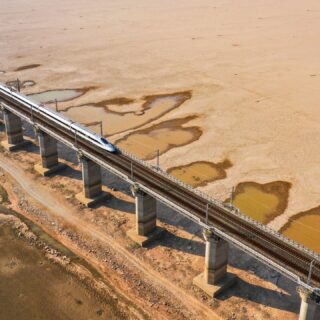Higher dry season temperature has rich implications for Chinese rivers
Under a typical monsoon climate, there are evident dry and wet seasons in China. The dry season receives less rainfall and has a higher potential for droughts to take place. Dry season changes in river runoff directly affect water availability and river ecology. Therefore, it is an important period that requires attention from managers of water resources and aquatic ecology.
Data source: Datacn.info, and School of Geography and the Environment, University of Oxford
Shu et al. (2021) analyzed the meteorological and runoff data of major rivers in China between 1961-2018. Their resultsshow that, the average dry season temperature is increasing significantly across the country, in particular northern China. Around 84% of the country is expecting more rain in the dry season, and 42.2% expecting significantly more. However,this does not mean the runoff of all rivers is increasing in the dry season. According to the records, the upper Songhua River yielded 67% more runoff between 2001 and 2018 than the time between 1961 and 1980, and the Yangtze River Basin, 16% more. To the contrary, the middle Yellow River reach saw a 34% decrease, and the Haihe River, more than 80%. The authors attribute the decrease respectively to the degraded ecosystem under warmer climate and significant anthropogenic disturbance.
Though runoff increase could potentially ease some problems of water and aquatic ecosystems, because of more water demand out of increased human activities and higher temperature, we will have to deal with more uncertainties for water security.
Full paper
- SHU Zhang-Kang, ZHANG Jian-Yun, JIN Jun-Liang, WANG Guo-Qing, WANG Lin, CAO Min-Xiong. Evolution characters and causes of the dry season runoff for the major rivers in China during 1961-2018[J]. Climate Change Research, 2021, 17(3): 340-351.



